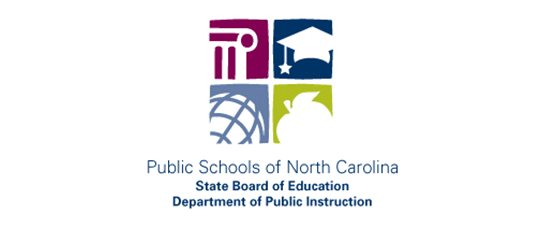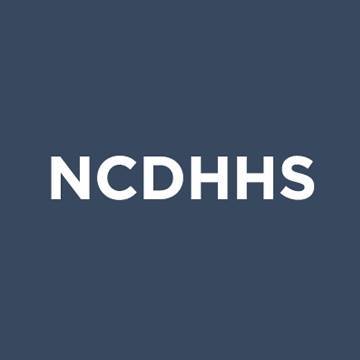
Last Updated on September 6, 2023 1:50 pm
RALEIGH, NC
State test results from the 2022-23 school year presented to the State Board of Education today show that North Carolina students continued to recover ground lost to the COVID pandemic, with gains across virtually all grades, subjects and student subgroups.
Schools also showed progress on accountability measures, with more than seven of every 10 achieving or exceeding their goals for academic growth, while the proportion of schools that did not meet growth expectations was just 1 percentage point higher than in the most recent pre-pandemic year of 2018-19. More than one in four of the state’s 2,598 public schools earned a School Performance Grade of an A or B; with nearly two out of every three receiving a C or better.
Because of disruptions in teaching and learning caused by the pandemic, the accountability report for the 2022-23 school year is the second since 2018-19 to feature all elements of the state’s accountability framework, including the calculation of growth designations and A-F School Performance Grades.
While school closures and remote learning resulted in unprecedented declines in end-of-grade and end-of-course test scores for the 2020-21 school year, results for the 2022-23 year show strong gains, particularly in math, with pandemic losses in some grades cut by more than two thirds. Reading scores also improved in all grades, with losses from 2020-21 cut by half, or more, in some grades.
State Superintendent of Public Instruction Catherine Truitt said last year’s accountability results show that schools remain on track to recover from the significant setbacks caused by COVID-19.
“It’s hard to overstate the impact of the pandemic,” Truitt said, “but teachers across North Carolina are working harder than ever to help students recover, and more importantly, advance in their learning. We owe them our gratitude for meeting this challenge to improve outcomes for students.
“We’ve now seen two consecutive years of gains that were greater than any of the several years preceding the pandemic losses, when year-to-year changes in average scores were generally flat, or in some cases, declining. Students and schools still have a way to go to catch up, but we have good reason to think that progress will continue,” Truitt said. “As more early-grades teachers adopt literacy instruction grounded in the science of reading, students will be stronger readers as they progress through elementary school and into middle school. We’re going to see continued improvement in those test scores and others.”
Results from the 2022-23 year reinforce findings of a recovery analysis this spring from the Department of Public Instruction’s Office of Learning Recovery and Acceleration showing that students made significant gains during the 2021-22 school year. The analysis found students showed signs of academic recovery in nearly every subject, with the strongest gains measured in middle and high school math, with notable gains also found in third- and fourth-grade reading, eighth-grade science and high school biology. Only high school English (English II) remained unchanged from 2020-21.
The performance of North Carolina students during the 2022-23 school year also mirrors trends reported in recent weeks by several other states that showed gains last year, particularly in math and science, after sharp declines in performance levels in the wake of the pandemic.
Eric Davis, chairman of the State Board of Education, said that North Carolina’s 2022-23 accountability results reflect the hard work and dedication of many educators and students to address the pandemic’s persistent effects on student learning.
“There is clear evidence of the efforts of educators, students, and parents to close the gaps in academic learning created during the pandemic,” Davis said. ” We should recognize those efforts and support those efforts with the resources our students need to succeed.”
The student achievement data for the 2022-23 school year are based on analysis of all end-of- grade (EOG) and end-of-course (EOC) tests, which are aligned to the North Carolina Standard Course of Study in English Language Arts (Reading) and Mathematics and the Essential Standards in Science for all public schools in North Carolina. The data provide the percentage of students who scored at Level 3 and above (grade level proficiency), at Level 4 and above (college and career readiness) and at each academic achievement level.
Tammy Howard, senior director of accountability and testing for the N.C. Department of Public Instruction, cautioned that the 2022-23 test data must be considered within the context of all COVID disruptions, and though 2018-19 data is included in the report released today, it is not intended to be used as a comparison for the purpose of evaluating effort or drawing conclusions.
“We are continuing to experience some of the impacts from the COVID-19 pandemic,” Howard said. “As we look at the data, the school performance grades and other information from the 2022-23 school year, it’s very important to note that while it’s informative, it is limited, and it is discouraged to make comparisons to 2018-19, which is prior to the pandemic.” She said 2018-19 is provided as a reference point only, not for the purpose of drawing linear comparisons.
The A-F school performance grades that schools received for 2021-22 and in 2022-23 were affected by the formula used to determine those grades because student performance on the state tests far outweighs the credit schools earn for the progress students make on the same tests from one year to the next. Eighty percent of the grade is for the percentage of tests earning a score of at least grade-level proficient; 20 percent is for growth, measured by a statistical model that compares each student’s predicted test score, based on past performance, against his or her actual result.
Even as most schools achieved at least expected growth, the A-F performance grades of many schools were depressed by lower-than-usual percentages of students earning a score of grade-level proficient. With the weighting of 80 percent on the test scores and other achievement data, the school performance grades have shifted downward, consistent with the impact of the pandemic on test scores. For the 2022-23 school year, the percentage of schools with a grade of D or F decreased to 35.4% from 42.3% in 2021-22 but remained higher than the 21.8% in 2018-19.
While the number of schools found to be low performing under the state accountability system decreased, from 864 to 804 for 2022-23, the number remains greater than the 488 identified as low performing in 2018-19, largely due to lower test scores. Because of the overall drop in A-F performance grades since 2018-19 school year, the number of low performing schools has increased, even as they have met or exceeded growth expectations.
Low-performing schools are those that receive a performance grade of D or F and do not exceed growth. Low-performing districts are districts where the majority of schools received a performance grade and have been identified as low performing. For 2022-23, the number of low-performing districts decreased to 25 from 29 the year before.
High school performance grades were also impacted by a higher minimum ACT score now required for admission to University of North Carolina campuses. The percentage of students of reaching that benchmark score on the ACT, required of all 11th graders in North Carolina, is one of the factors used to determine each high school’s A-F performance grade, along with EOC scores, 4-year cohort graduation rates and other indicators. The percentage of 11th graders achieving the UNC minimum of 19 was 41.1 in 2022-23, compared to 41.7 percent in 2021-22.
In terms of subject-specific performance in elementary and middle school grades, 30.9% of students in grades 3-8 statewide scored at a level 4 or 5 in reading, considered to be Career and College Ready (CCR), compared to 29.3% in 2020-21. When students who scored at a level 3 are included also, 50.2% of students in grades 3-8 were considered Grade Level Proficient (GLP), compared to 48.4% in 2020-21.
In math, 34.9% of students in grades 3-8 statewide scored at the CCR levels 4 or 5, compared to 32.1% in 2021-22, and 53% of students in grades 3-8 scored at the GLP level when scores at the 3 level were included, compared to 49.8% in 2021-22.
Scores increased from 2021-22 in all grade levels, 3-8, in both reading and math, at the Grade Level Proficient standard and at the Career and College Ready standard. Fourth-grade scores showed the strongest gains, both in reading and math.
Overall, math scores in elementary and middle school grades were up more significantly than reading scores. The scores on science exams, given at grades 5 and 8, showed gains from 2021-22 in 5th grade but a decline in 8th grade.
Among end-of-course exams administered in high school grades, scores on the NC Math 3 exam exceeded the 2018-19 pre-pandemic performance, while scores on NC Math 1 and biology exams improved from the 2021-22 year. Scores on the English II exam were up slightly at the GLP level and down slightly at the CCR level from the previous year.
The state’s 4-year cohort graduation rate, also a factor in determining high school performance grades, was 86.4%, unchanged from 2021-22, and was also largely unchanged from the 86.5% rate in 2018-19.
*** Go here for complete 2022-23 results for the state, districts and schools, under the 2022-23 Reports heading and the 2022-23 Annual Testing Report – Includes Performance, School Performance Grades, and Long-Term Goals under the Documentation heading.



















